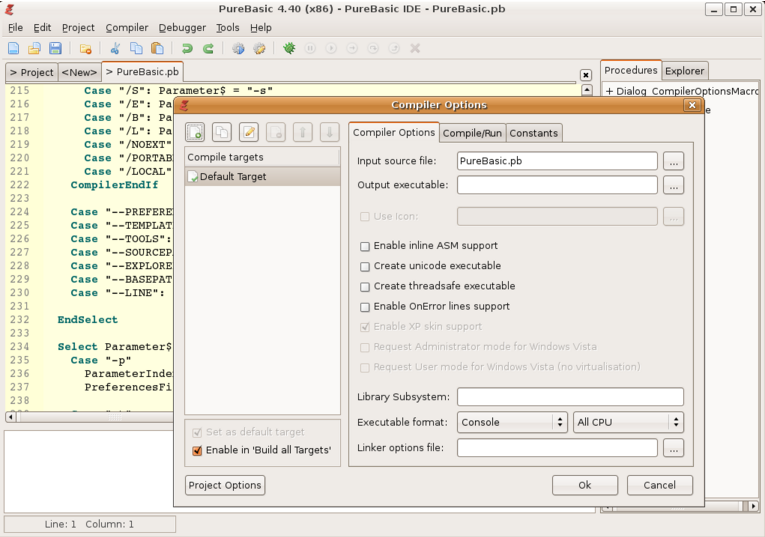
- Purebasic image memory allocation how to#
- Purebasic image memory allocation code#
- Purebasic image memory allocation download#
- Purebasic image memory allocation free#
* in obtained storage location, and branch to it * copy instruction sequence SR Reg15,Reg15 Branch Reg14 to DATA1 USING DYNAREA,10 using for dynamic memory area STORAGE OBTAIN,LENGTH=(9),EXECUTABLE=NO,LOC=ANY LA 9,WALEN load memory length in Register 9 LARL 12,CONSTANTS load address relative long

IEABRCX DEFINE convert based to relative branchesīAKR 14,0 callers registers to linkage stack
Purebasic image memory allocation code#
SYSSTATE AMODE64=NO,ARCHLVL=3 gen z9+, z/OS 2.1+ bin code

Though not a requirement for this type of sample code it is a best practice in assembler coding.
Purebasic image memory allocation free#
* Request to Free Storage Managed by "FREEMAIN" Supervisor Call (SVC 5) GOTSTG L Load Reg (any Reg) with Addr of Aquired Stg LA 1,PLIST Point Reg 1 to GETMAIN/FREEMAIN Parm List It’s clear that some limitations are present in the template but for most of the tasks this is a great addition to anyone’s code.* Request to Get Storage Managed by "GETMAIN" Supervisor Call (SVC 4) Because overloading doesn’t exist in PB, the constructor will be called twice (once by the template and once by yourself) if you want to define the members using said ctor, just make certain that any dynamic allocations are performed only once or you’ll have a nasty memory leak in your hands. We’re not trying to mimic any language here but rather provide a way of dealing with objects without having to write redundant code all the time. There are certain limitations that forced me to design the template as it is right now but the usage is very simple. Macros in this case are used as an aid to define templates (like you would in C++ for instance). If we decide to unregister a class, all of the objects will be freed and their respective destructors will be called. Once a class has been registered, we can create new objects and delete them at will. The usage is fairly simple: classes can be registered and unregistered. The purpose of EasyObject is mainly to encapsulate trivial and redundant code usually regarded to allocation, deallocation and keeping track of the objects. With EasyObject you can define constructors and destructors as well as iterators with ease. It allows you to register any structure as a “class”. Ok, now let’s describe this thing a little more and leave the marketing speech in the past.ĮasyObject is an object factory template for PureBasic.
Purebasic image memory allocation how to#
Third, you’re free to post any comments regarding on how to enhance it if you dear to!.
Purebasic image memory allocation download#
If you open your eyes you’ll see that this is an obvious pattern but what isn’t so obvious is how do you implement a template that deals with it in an efficient and clean way within the current constraints of the language.įirst, download it. code every time you incorporate a new “class” into your project. Why should we?, let’s avoid it all together and focus our efforts in the task at hand rather than in the mundane stuff. However in essence, you end up writing pretty much the same allocate / deallocate, list, etc. Think about it, you encapsulate your structure-related code in such a way that it becomes clean, nice and tidy - in other words it makes it easy to understand what it does. Whenever you deal with structures and what have you it’s obvious that there has to be a better way of doing it.


 0 kommentar(er)
0 kommentar(er)
